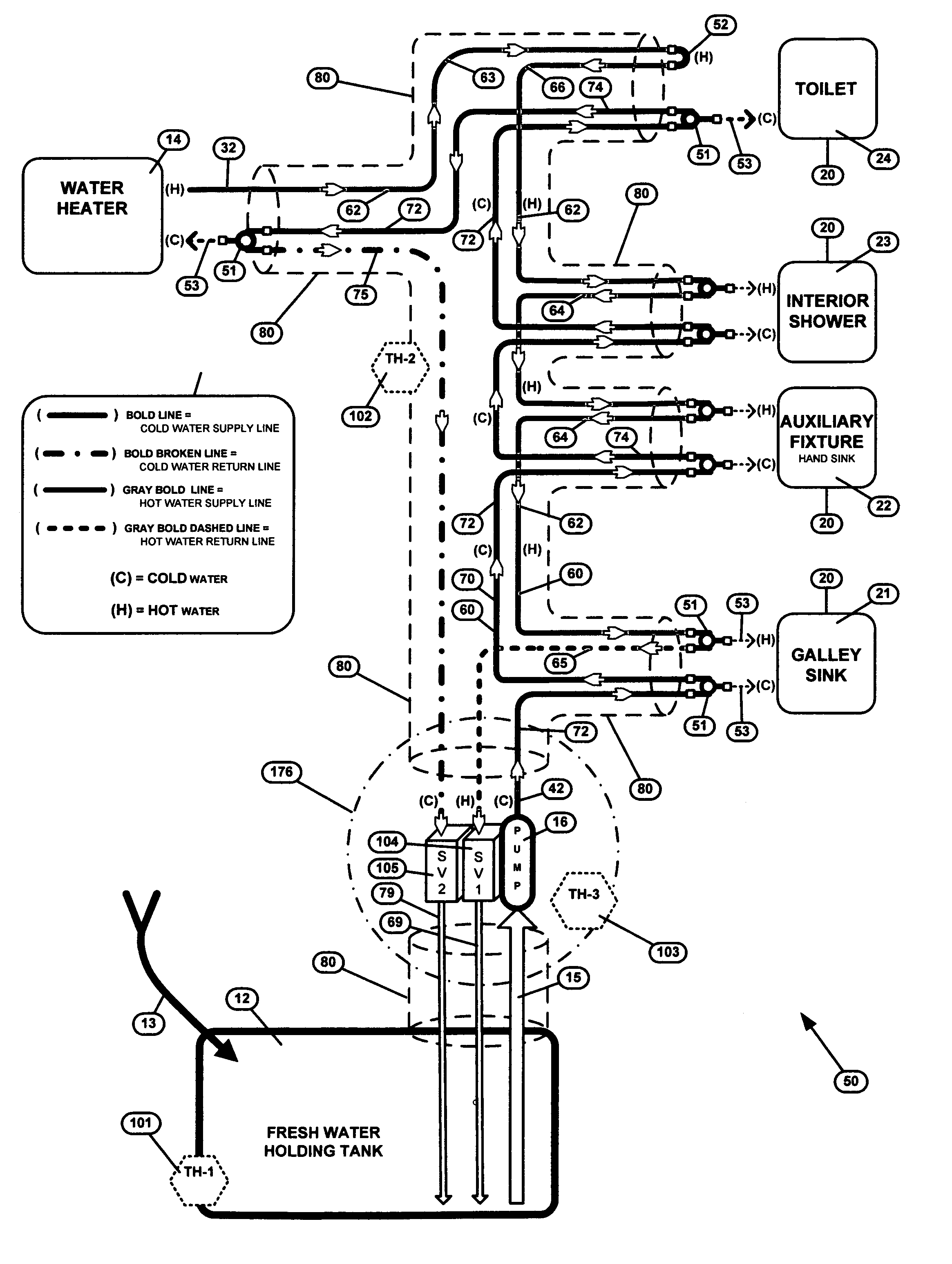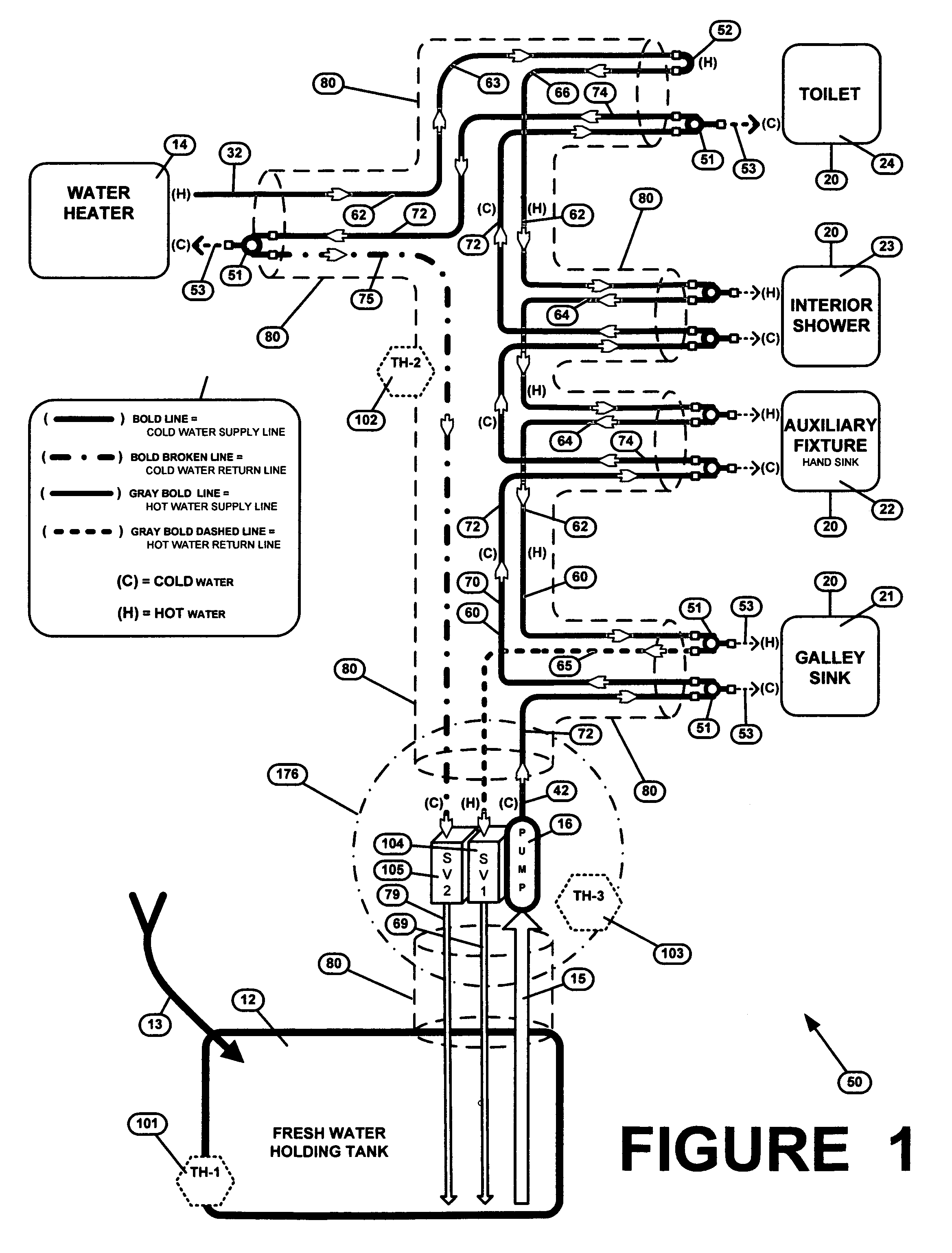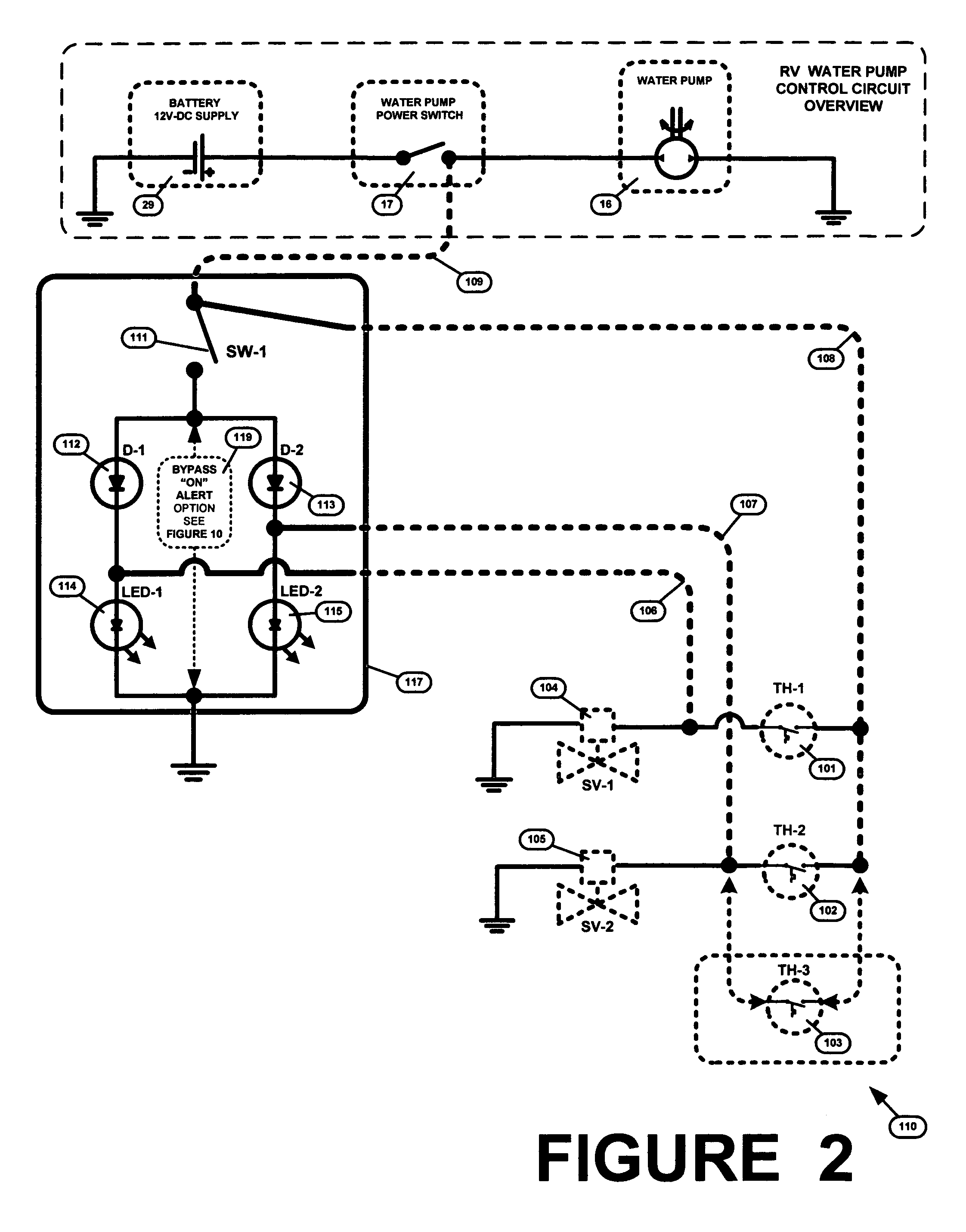Recreational vehicle low temperature water supply warming system
a low-temperature water supply and recreational vehicle technology, applied in positive displacement liquid engines, drawing-off water installations, transportation items, etc., can solve the problems of limiting the use of the great majority of recreational vehicles (rvs) with on-board water systems, consuming the limited on-board fuel supply, and putting a significant load on the on-board battery system. 12v d
- Summary
- Abstract
- Description
- Claims
- Application Information
AI Technical Summary
Benefits of technology
Problems solved by technology
Method used
Image
Examples
Embodiment Construction
[0059]While this invention is susceptible of embodiment in many different forms, the figures shown and the specification describes in detail a preferred embodiment of the invention. It should be understood that the drawings and specification are to be considered an exemplification of the principles of the invention. They are not intended to limit the broad aspects of the invention to the embodiment illustrated.
[0060]The present invention relates to an apparatus and method of warming and circulating the water in the fresh water holding tank and the water fixture supply lines of a Recreational Vehicle that is generally indicated by reference numbers 50, 150 or 200 shown in FIGS. 1, 4 and 9, respectively. Each embodiment of the water warming and circulating apparatus and system 50, 150 or 200 includes a holding tank 12, a water heater 14, a pump 16, a water fixture 20, a heated water loop 60 and a cold water loop 70. The location of the hot water heater 14 can differ relative to the pu...
PUM
 Login to View More
Login to View More Abstract
Description
Claims
Application Information
 Login to View More
Login to View More - R&D
- Intellectual Property
- Life Sciences
- Materials
- Tech Scout
- Unparalleled Data Quality
- Higher Quality Content
- 60% Fewer Hallucinations
Browse by: Latest US Patents, China's latest patents, Technical Efficacy Thesaurus, Application Domain, Technology Topic, Popular Technical Reports.
© 2025 PatSnap. All rights reserved.Legal|Privacy policy|Modern Slavery Act Transparency Statement|Sitemap|About US| Contact US: help@patsnap.com



